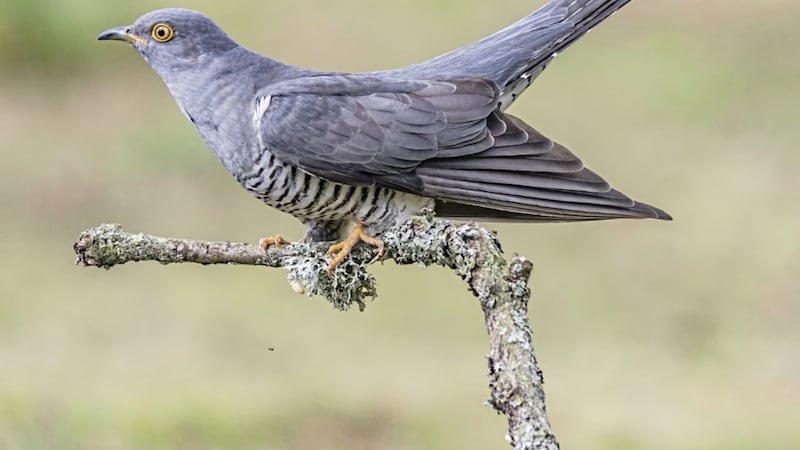WHILE bird surveying recently near Mullaghfad Forest, Co Fermanagh, I used the solitude and time to reflect on the surrounding natural environment.
This wild and remote landscape of coniferous forest, blanket bog and heathland forms part of a wider Special Protection Area (SPA) which includes a significant part of the Sliabh Beagh uplands straddling the borders of counties Tyrone, Fermanagh and Monaghan.
The area contains a number of internationally important habitats listed under the European Habitats Directive, including blanket bog, dry heath and dystrophic lakes. The area’s SPA designation recognises it as a site for supporting internationally important populations of hen harrier, the bird I was there to monitor. Surveying like this requires long hours of observation and waiting for signs of the target species.
The hen harrier, cromán na gcearc (hen crow) in Irish, is a striking raptor, sometimes called the ‘ghost of the moor’ because of the ghostly grey and black wing-tipped male’s habit of appearing and disappearing as it flies languidly through the hilly landscapes and forests it dominates.
Persecuted for centuries across Ireland and Britain because of its alleged predation of poultry and game, the bird has made recoveries in Ireland, but it still struggles to gain a foothold in England.
Waiting for the dense early morning fog to lift, I also realised that I wasn’t far from the cottage where the infamous ‘Cooneen Ghost’, or poltergeist was said to have terrified a widow woman and her children back in 1913 with the throwing of pots, pans, loud bangs and other strange happenings.
Even after two exorcisms, the ghost continued to plague the family, resulting in their eventual emigration to America. This back story added a sense of the macabre to the morning as a cloak of fog enveloped me, just before the dank air was punctured by a trio of ghostly sounds, the eerie mewing cry of a buzzard, the screeching call of a jay, and the haunting call of the cuckoo.
Much has been written about the cuckoo (Cuculus canorus) and how it divides opinion, even though its call is eagerly awaited by most each spring. Ulster poet and harper, Séamus Dall Mac Cuarta opens his poem, Fáilte don Éan (1707) with the line, "Fáilte don éan is binne ar craoibh" – "welcome to the bird, the sweetest in the trees" – while Wordsworth says of it: "Thrice welcome, darling of the spring!"
In contrast however, the book of Leviticus warns the children of Israel to hold the cuckoo ‘in abomination’. The 17th century English Puritan preacher, John Bunyan, whose views were probably coloured by the holy book was clearly not an admirer of the bird, writing, "Thy notes do not first welcome in our Spring/Nor dost thou its first token to us bring", and describing it as the "yawling, bawling cuckoo".
A master of deception, the bird’s exploits of replacing a host bird’s egg with one of its own is well known. Once hatched, the naked, blind chick will eject any remaining eggs, ensuring it receives the full attention of its foster parents. In Ireland the main host species, the meadow pipit, has acquired some Irish names reflecting this association, banaltra na cuaiche (nurse of the cuckoo) and giolla na cuaiche (servant of the cuckoo).
One amazing aspect of the cuckoo’s life not often noted, is the young bird’s ability to navigate and fly to its wintering grounds in Africa, without ever being shown or accompanied by an adult cuckoo.
When the fog finally lifted, a female harrier, or ‘ringtail’ appeared, circling above, before flying off beyond a bank of forest behind me.








